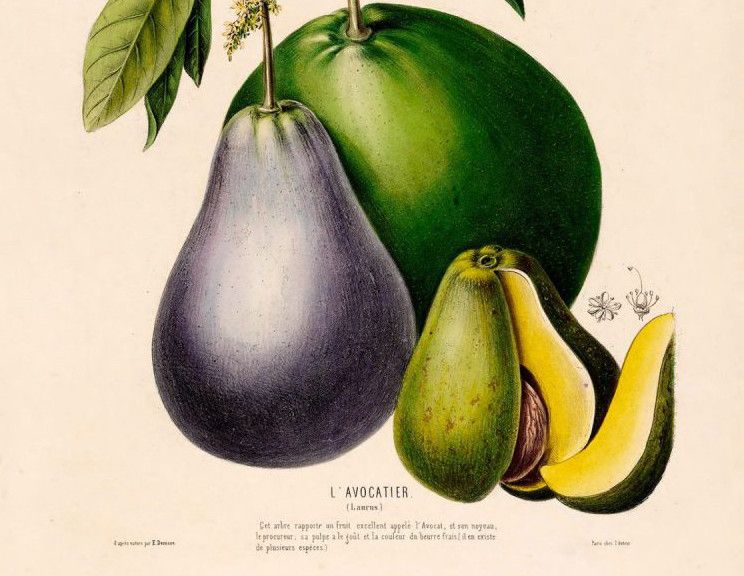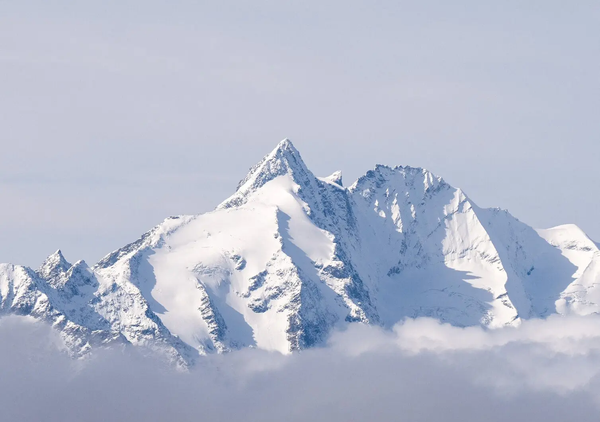Things can get pretty weird at the sub-atomic level
Some of you might notice that today's newsletter looks a little different than usual (if you haven't noticed, or don't care, please just continue reading!)

Hi everyone <waves>. Some of you might notice that today's newsletter looks a little different than usual (if you haven't noticed, or don't care, please just continue reading!) It looks different in part because I'm experimenting with publishing it via Ghost, an open-source publishing platform, instead of what I was using, which was the Revue service that Twitter acquired awhile back.
Revue is fine for what it does, but it has gone down several times now, and it suffers from other annoying glitches where things just don't work, for no apparent reason. Plus, it doesn't seem like Twitter is really committed to the whole newsletter thing (and who can blame them given all the Musk hysteria.)
Anyway, Ghost was recommended to me by a number of people, including Arikia Millikan. Others I respect use it as well, including Luke O'Neill, who moved his excellent Welcome to Hell World newsletter to Ghost from Substack (a move that caused Substack founder Hamish McKenzie to write this vaguely passive-aggressive note about O'Neill's departure).
That's the appearance and delivery part of the changes. But I'm also making some changes on the content side as well. Instead of just a collection of links to the top news stories, I'm going to try to include a broader range of news stories, blog posts and other items (tweets, etc.) that catch my eye – including some odd or unusual ones — along with either an excerpt or some thoughts of my own. Many of these will also appear on my personal blog.
Bottom line: this is an experiment. If you don't like it, please say so! Or you can just unsubscribe of course – don't ask, don't tell. And if you do like it, feel free to say that as well, or if you have thoughts about what I should or shouldn't be including. In any case, thanks for reading. Onward!
The problem with Facebook
Here's an excerpt from a great piece by Dave Karpf, a professor of internet politics at George Washington University, on the problem with Facebook, or why big money ruins everything. I encourage you to read the whole thing:
“The trouble with Facebook is, more broadly, the trouble with the entirety of Silicon Valley and its particular version of techno-capitalism. You could imagine a profitable company that does what Facebook is actually good for. Create a free social network with a newsfeed optimized for personal life updates and conversations within your extended social graph. Pare things back, revert it to the place where people keep in touch and organize dinner parties. Sell advertisements against the page views. There’s money in such a company. But it’s not a trillion-dollar company. Its founder doesn’t buy a mansion and then buy all the houses on adjacent lots to ensure privacy. Its early investors don’t carve out entire career paths on the basis of having been an early-investor-in-Facebook."

Things get weird at the sub-atomic level
I loved Paul Kix’s intro to this piece by Adam Frank, a physicist, in Aeon magazine (and really liked the piece itself as well, obviously). I think we forget sometimes just how strange the foundations of our reality are:
"Okay, we live in a world. That world contains us and all the things we see. Of what are these things comprised? Matter! physicists say. Fantastic! And what is matter made of? Atoms, physicists say, but not as enthusiastic because they sense where this is heading. And what are atoms and their sub-atomic particles made of? the world asks. The actual stuff of life? Here physicists are silent. Not because they don’t know—not exactly—but because the answer is too weird to be believed. Also: sub-atomic particles exist in two places at once. This is even weirder. This one particle is here, and also there, and at the same time. How can one thing be in two places at once? And what is the implication of that? Especially when that one thing is the literal building block of all life?"

Librarian keeps love notes and doodles
It's not really newsworthy in the larger sense, but this is still a really great and touching piece from the Washington Post:
"In her 20 years as a librarian, Sharon McKellar has unearthed all kinds of left-behind personal items — from doodles to recipes to old photographs — nestled between the pages of returned library books. She carefully removes them and reads them, then she scans and uploads them to the library’s website after scrubbing any personal identifying information. “Part of the magic is that they sort of just appear,” McKellar said. “Sometimes, they may have been in a book for a really long time before we notice them there.” McKellar — a librarian at the Oakland Public Library — marvels at each memento, no matter how mundane."

I've got the morbs
Love this from Bob Nicholson, the DigiVictorian, which I found via someone's Tumblr blog I think:

The prophetic movement in America
Talia Lavin is a journalist who writes a great newsletter called The Sword and the Sandwich that alternates between social and cultural analysis and reviews of famous sandwiches (I know that seems like an odd combination but it works pretty well in my experience). In a recent issue, Talia looked at the rise of prophetic religious movements and attitudes in the US:
“Looking into the eyes of those struck by a prophet, you can perceive a ravenous hunger for connection: that the touch of the hand or the breath from the mouth of a charismatic preacher can fill you with the wind of God; that you are not alone in the universe; that you and the rest of the flock can shore up an island of sanctuary for yourselves, and watch in comfort as the world drowns. It is the hunger to be among the elect, and to be immortal, to be one with the Divine, and to welcome the end times. It is the hunger to turn Fortune’s Wheel with your own hands to your own ends, to guide its revolutions, to cast down the capricious goddess and lift up the prophet in his certainty and zeal.”

The unlikely survival of the humble avocado
This is a fascinating story about how we got the avocado we now associate with the term — something that was not a given by any means, as Maria Sharapova describes at The Marginalian (formerly Brain Pickings):
"In the last week of April in 1685, English explorer and naturalist William Dampier — the first person to circumnavigate the globe three times — arrived on a small island in the Bay of Panama. Dampier made careful note of local tree species, but none fascinated him more than the tall “Avogato Pear-tree,” with its unusual fruit — “as big as a large Lemon,” green until ripe and then “a little yellowish,” with green flesh “as soft as Butter.” He described how the fruit were eaten — two or three days after picking, with the rind peeled — and their most common local preparation: with a pinch of salt and a roasted plantain, so that “a Man that’s hungry, may make a good meal of it.”
The world’s most beloved avocado — the Hass — is the consequence of human interference consecrated by happenstance in the hands of a California mailman in the 1920s. The year he turned thirty, Rudolph Hass was leafing through a magazine when an illustration stopped him up short: a tree growing dollar bills instead of fruit. He was making 25 cents an hour delivering mail while raising a growing family. The tree, he learned, was an avocado and its fruit were promised to be the next great horticultural boon."

A virtual reality projection for diners
«Le Petit Chef» restaurants playfully guide diners through an interactive experience where the story behind each course is brought to life through cutting edge projection-mapping created by the world-famous artists of Skullmapping https://t.co/75fbSD1RGGpic.twitter.com/AV7SWmberr
— Massimo (@Rainmaker1973) August 5, 2022



